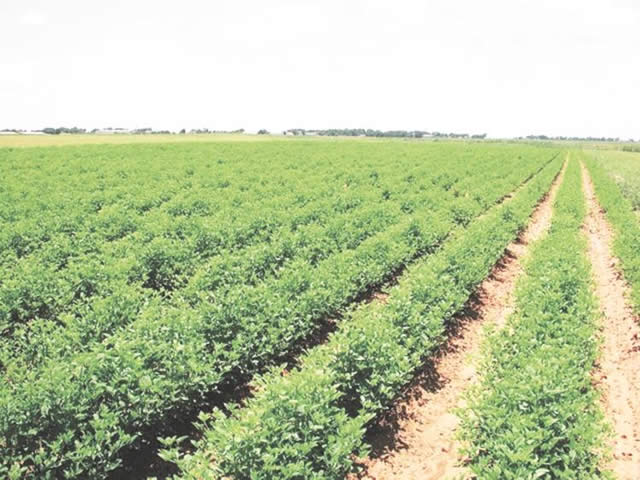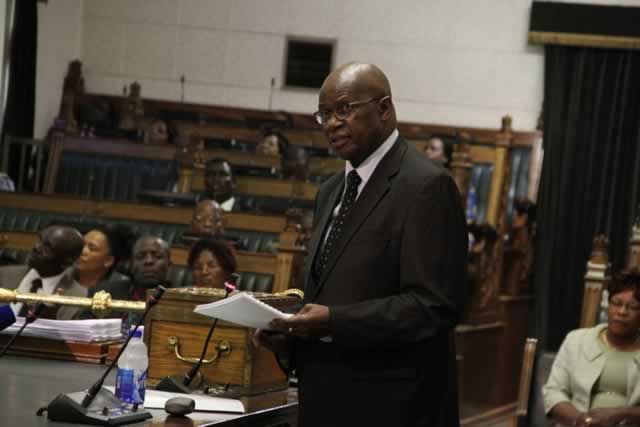Time to put finality to the land question


At present, some beneficiaries of land reform need a helicopter to check out their farms because the land is too big
Lloyd Gumbo Mr Speaker Sir
The withdrawal of 25-year leases from Zanu-PF heavyweights in Save Valley Conservancy in Chiredzi who are believed to have been double-dipping has come as good news to progressive Zimbabweans. Finally, the revolutionary party has decided to bite the bullet and correct its wrongs by putting the majority first ahead of a clique of party gurus whose insatiable appetite for accumulation is shocking.
Mr Speaker Sir, the land redistribution exercise was meant to correct land ownership imbalances created by colonialism that saw a handful of whites owning huge tracts of arable land while the landless majority were squatting in rocky areas.
Following the land redistribution exercise, some retrogressive forces went all out to claim that only Zanu-PF heavyweights and those with links to the revolutionary party had benefited from the programme.
In essence, they claimed that land had been taken from a white minority and given to a black minority without tangible benefits to the majority of victims of the imperialist system whose living conditions had not changed despite the advent of the land redistribution exercise.
Several studies have been carried out to establish if indeed the land redistribution exercise had benefited the landless majority or just “President Mugabe and his cronies”, as those forces would want to portray it.
Ian Scoones – an agricultural ecologist by training and Professorial Fellow at the Institute of Development Studies at the University of Sussex in the United Kingdom – has dismissed this notion from his research in Masvingo, where he found that about 60 percent of resettled farmers were ordinary farmers.
“This was not a rich, politically-connected elite but poor, rural people in need of land and keen to finally gain the fruits of independence,” he said in his writings, challenging the myths about Zimbabwean agriculture and land reform.
Those in authority felt vindicated that finally a white person had acknowledged that indeed the land reform was a success even if it also had its fair share of challenges.
However, it is the behaviour and attitude of disgraced double-dipping comrades who give credence to some of the claims that the land reform exercise was only meant for Zanu-PF and those with links to it.
Mr Speaker Sir, it is actually an indictment on Parliament that the decision to withdraw the leases had to come from Cabinet at the instigation of the Zanu-PF Politburo when legislators should have forced this policy shift by virtue of their role as watchdogs.
Anyway, all is not lost, our legislators can still redeem themselves when the Land Commission Bill is brought to the House by ensuring that all the loopholes in legislation to do with land are plugged.
The Land Commission legislation will be the best to address the shortcomings in land issues since the commission will be charged with ensuring accountability and transparency in the administration of agriculture and conducting periodical audits of agricultural land.
It is now clear that the demand for land is real in Zimbabwe if one is to take into account the number of cases of desperate land seekers who have been duped while looking for land.
Land seekers across the country are told that land that was earmarked for redistribution has been exhausted.
According to the Zanu-PF 2013 election manifesto, 276 620 households have taken ownership of more than 12 million hectares of arable land.
The manifesto adds: “Today land is the most indigenised resource in Zimbabwe with 91 percent now owned by the indigenous population.”
Yet a 2012 census by the Zimbabwe Statistics Agency revealed that the national population consisted of 3 076 222 households, a clear indication of a gap that exists in terms of land redistribution beneficiaries.
What it means is that about 9 percent of the country’s total households benefited from the land redistribution exercise.
What complicates the situation is the fact that those who benefited are getting 99-year leases, which means that those who did not benefit when the programme started are likely to be disenfranchised for almost a century.
What it means is that only descendants of those who have already benefited will own land for the next century while descendants of those who did not benefit will not.
Some people have argued that those who did not get a piece of land at the turn of the millennium should not blame anyone but themselves since they were reluctant to take the land thinking that it was a Zanu-PF political gimmick.
Fact!
The MDC played a role in discouraging its supporters from applying for land and it still does but there are others who at the time felt they were not farmers.
There are also others who at the time were still in school and under the family household which meant they could not independently apply for land.
Procreation has continued and as a result others were born after the land redistribution exercise as the population continues to grow.
All these categories of people now want land including MDC supporters who were misled by their party.
These indigenous citizens cannot be deprived of access land just because they were reluctant or too young to apply for it when the programme started.
Mr Speaker Sir, it is surely not a crime for one to change their mind after seeing that there was no going back on the land redistribution exercise.
Neither is it a crime for one to have been born after the year 2000.
What is most disturbing is that, according to the Zanu-PF manifesto, just over 700 youths benefited from the land redistribution exercise though others could have benefited under the mixed beneficiaries.
As such, the land redistribution exercise cannot be said to be a closed chapter.
The revolution has just started, it is now up to this current Parliament with a Zanu-PF majority to address the gaps that exist.
For this exercise to be sustainable, it is important that the revolutionary party that started the land redistribution exercise corrects these anomalies.
It would be undesirable for it to be done by any other political party in future because it will end up being a clean-up campaign targeting current beneficiaries.
We don’t want a situation where in the next 30 years, we have another revolution where the landless majority will take to the streets or farms demanding that they also get a share from the farms owned by indigenous Zimbabweans.
Such a scenario will certainly affect agricultural productivity that is now on the rise after a decade in the doldrums.
It is therefore important that the situation is addressed now before it is too late.
Land does not grow, as such it is vital that we share what is available without compromising the capacity of future generations to also own land for them to be productive.
It would have been ideal if Government had not disbursed all the land but left reserves for allocating to anyone who applies for land as and when they want it.
The best way of closing these gaps is by reducing the land size of all A2 beneficiaries without fear or favour.
We cannot have a situation where some people have hundreds or even thousands of hectares of land while other indigenous Zimbabweans do not even have an acre.
If we say land should benefit the majority of indigenous Zimbabweans, let our words be not too far off our actions.
If the land redistribution exercise is to be sustainable in the long run, there is need to reduce the area size of A2 farms to a maximum of 30 hectares per beneficiary.
At the moment some beneficiaries need a helicopter to check out their farms because the land is too big.
Inevitably, some beneficiaries have failed to utilise all the land they got and as a result end up leasing to white farmers for financial gain, which defeats the whole idea of empowering indigenous Zimbabweans.
One does not need huge tracks of land in order for them to produce more given that there are strategies like agricultural intensification that have shown that one can still harvest huge yields even with a small piece of land.
What is important to note is that land size is not what matters in agriculture if one is to look at how Asian countries have transformed their agricultural productivity.
There is therefore no justification for one to own huge tracks of land claiming that they want to produce more while others do not even have an acre for subsistence.
Even for commercial purposes, it is important that the sector be widened by parcelling out land to the majority for us to achieve socio-economic development.
We would rather have the majority benefit from tobacco sales than just a handful if we are indeed to transform livelihoods.
Feedback: [email protected]









Comments